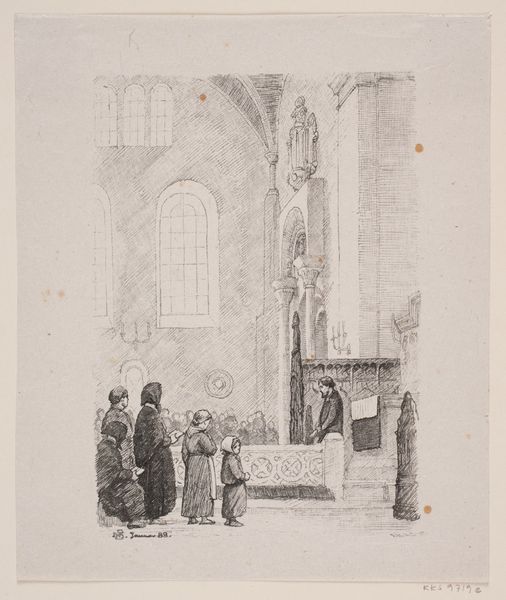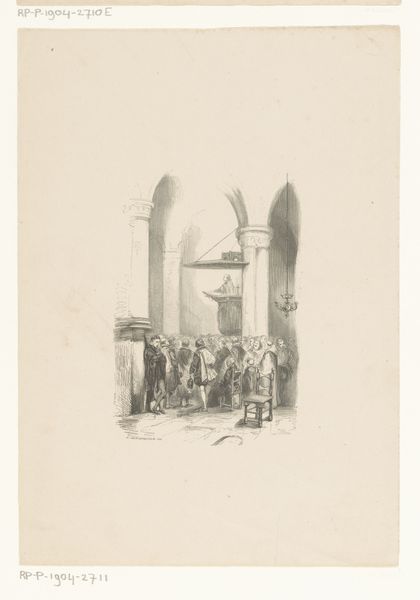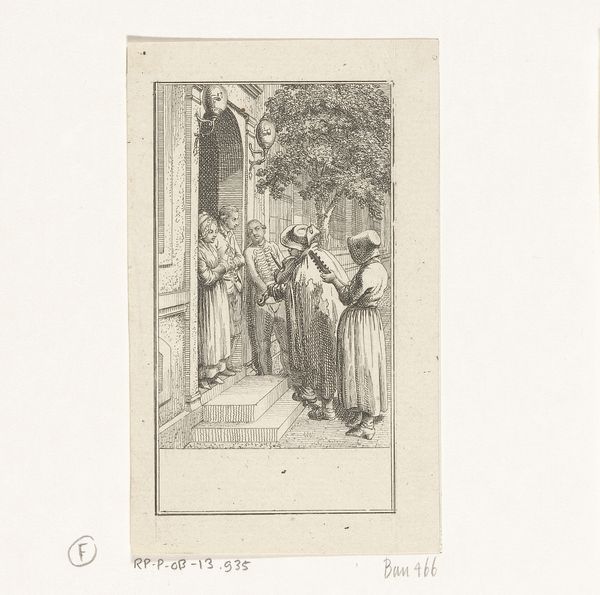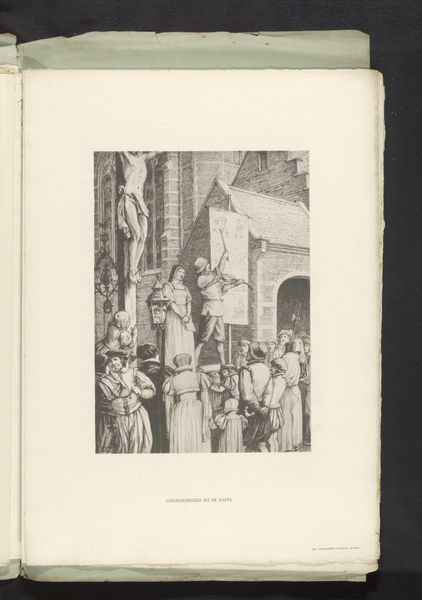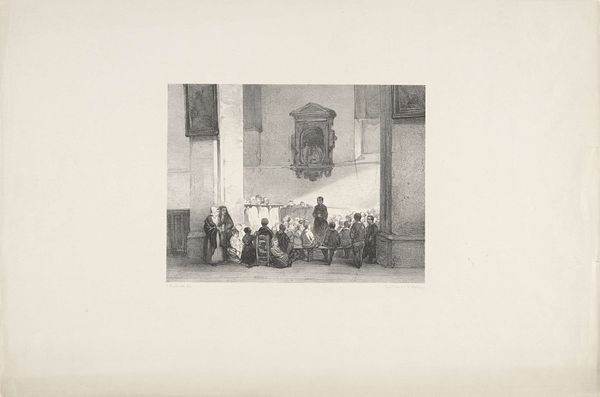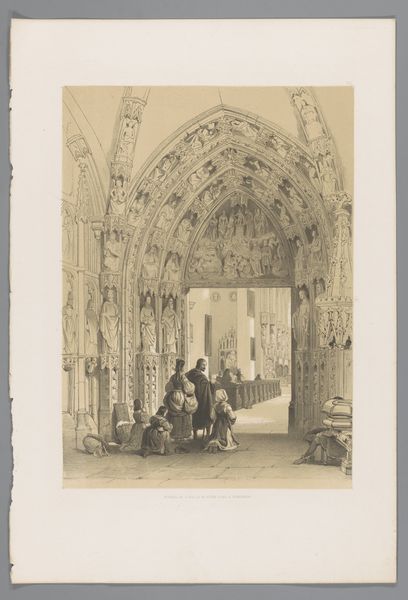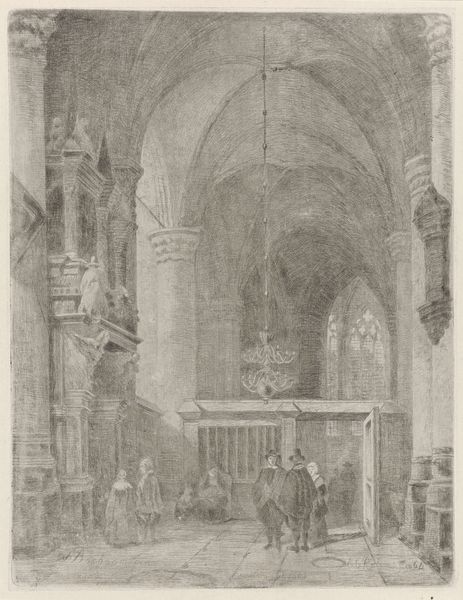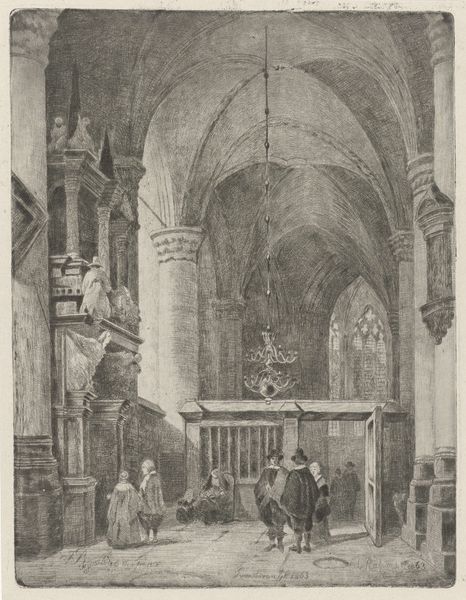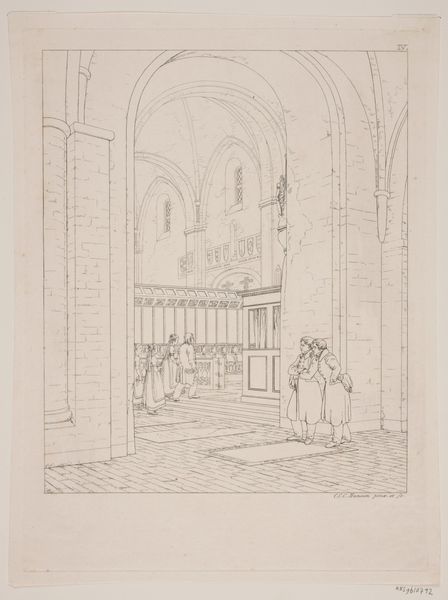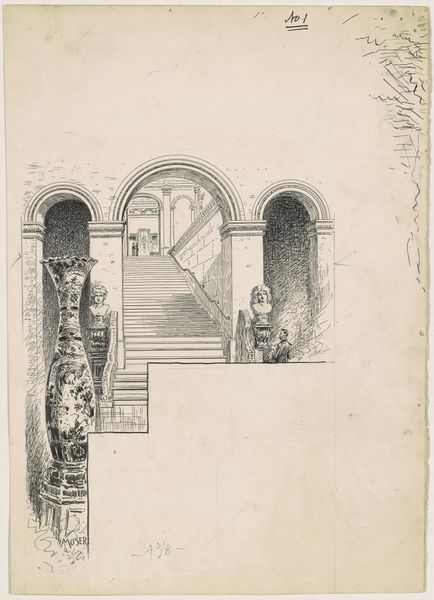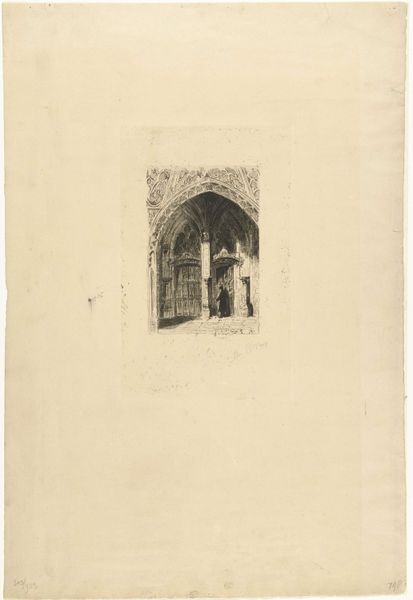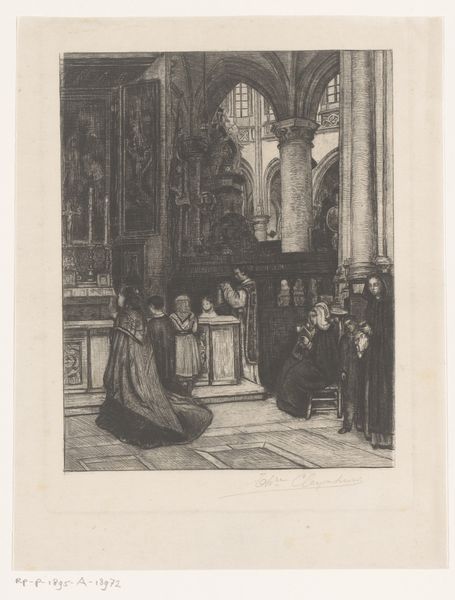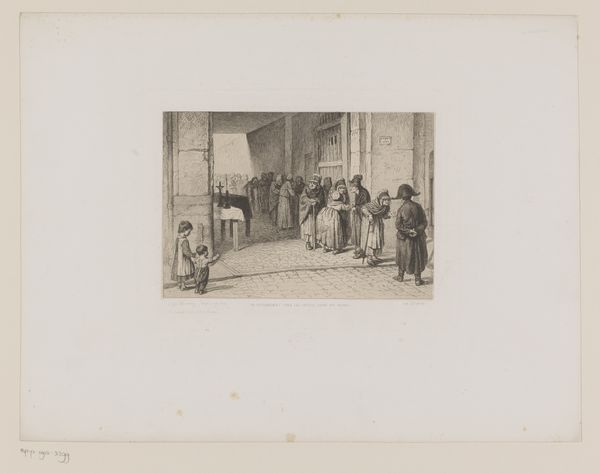![Diethers Einkehr ins KlosterIllustration zu_ Heinrich Steinhausen, „Irmela. Eine Geschichte aus alter Zeit“, Prachtausgabe, Leipzig_ Georg Böhme, [1884], S. 147 by Wilhelm Steinhausen](/_next/image?url=https%3A%2F%2Fd2w8kbdekdi1gv.cloudfront.net%2FeyJidWNrZXQiOiAiYXJ0ZXJhLWltYWdlcy1idWNrZXQiLCAia2V5IjogImFydHdvcmtzLzU5MDcxMjUxLTczNDYtNDQyZS1iY2IwLWYzODc2MzJiNjU3MS81OTA3MTI1MS03MzQ2LTQ0MmUtYmNiMC1mMzg3NjMyYjY1NzFfZnVsbC5qcGciLCAiZWRpdHMiOiB7InJlc2l6ZSI6IHsid2lkdGgiOiAxOTIwLCAiaGVpZ2h0IjogMTkyMCwgImZpdCI6ICJpbnNpZGUifX19&w=3840&q=75)
Diethers Einkehr ins KlosterIllustration zu_ Heinrich Steinhausen, „Irmela. Eine Geschichte aus alter Zeit“, Prachtausgabe, Leipzig_ Georg Böhme, [1884], S. 147 c. 1884
0:00
0:00
drawing, paper, ink
#
drawing
#
16_19th-century
#
narrative-art
#
figuration
#
paper
#
ink
#
pencil drawing
#
line
#
history-painting
#
northern-renaissance
Copyright: Public Domain
Curator: This drawing, circa 1884, is titled "Diethers Einkehr ins Kloster," or "Diether's Entry into the Monastery." Wilhelm Steinhausen rendered it as an illustration for a novel, using ink on paper. It's such a study in contrasts... look how subdued it is! Editor: Yes, a definite quietness. The gray washes give it the feeling of an overcast day, or perhaps even a dream. The bare trees, the monks with their heads bowed—it feels very inward-looking. Like a soul seeking shelter. Curator: Precisely! The imagery reinforces this reading. Monasteries, historically, represented a retreat from the world, a seeking of solace, and often, a conscious confrontation with one's mortality. Here, it's more than just a sanctuary. The image speaks to a transition, not just in location but also in identity. I see the cloaked figures as embodying the fading allure of earthly life as Diether enters the religious community. The monastery promises—or perhaps threatens—spiritual transformation. Editor: Absolutely, I can feel the weight of those vows. And the setting is so evocative. You know, the cloister—the architecture with those arches—reminds me of how repetitive cycles, both of nature and in human lives, intertwine in seeking divine presence through focused labor and worship. Do you think Steinhausen considered the tradition of memento mori images when making it? Curator: I think so! These monks gathered within a courtyard almost literally embody a space of contemplation. Steinhausen makes clever use of the visual rhetoric; it becomes a study in spatial organization. Also, that bright empty space centered at the back; it acts like a silent echo—almost screaming a message about absence and presence. It demands the viewer question what’s central: piety or absence, life’s end or rebirth. What do you take away, looking at it one last time? Editor: The idea of cyclical continuity gets me, with these figures walking toward their maker, finding peace in structured submission. The somberness gives depth and dimension to spiritual dedication, framing commitment and a symbolic understanding of sacrifice as acceptance. Curator: Indeed. Each viewer has something uniquely their own to learn, just by standing still and feeling this one out.
Comments
No comments
Be the first to comment and join the conversation on the ultimate creative platform.
